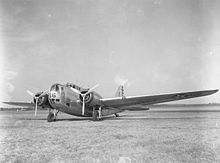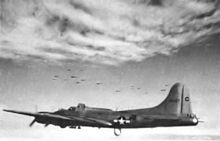
The 487th Air Expeditionary Wing is a provisional United States Air Force unit assigned to the United States Air Forces in Europe. As a provisional unit, it may be activated or inactivated at any time. The unit's last known assignment was in 2003 at Cairo West Air Base, Egypt, during Operation Iraqi Freedom.

The 500th Air Expeditionary Group is a provisional United States Air Force unit. Its last known assignment was at Christchurch, New Zealand, where it was activated for the summer 2005–2006 season.

The Commandant of Cadets is a named organization of the United States Air Force based at the Air Force Academy in Colorado Springs, Colorado. Until August 2006 the commander of the 34th Training Wing was "dual-hatted" as the Commandant of Cadets at the Academy. In that month the 34th Wing became a named organization.
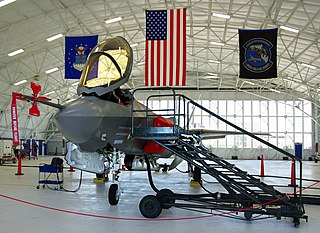
The 46th Test Wing is an inactive wing of the United States Air Force last based at Eglin Air Force Base, Florida. The wing's 46th Test Group was a tenant unit at Holloman Air Force Base, New Mexico.

The 444th Air Expeditionary Wing is a provisional unit of the United States Air Force assigned to Air Combat Command to activate or inactivate as needed. It was last activated in 2003.
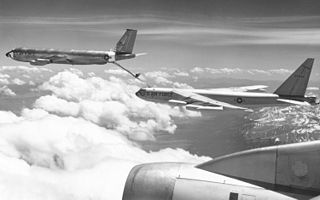
The 462d Air Expeditionary Group is a provisional unit of the United States Air Force. It is assigned to Air Mobility Command to activate or inactivate as needed to meet operational requirements. Its last assignment was at Naval Support Facility Diego Garcia, British Indian Ocean Territory.

The 453rd Bombardment Group is an inactive United States Air Force unit that was first organized in June 1943, during World War II, as a Consolidated B-24 Liberator heavy bomber group. After training in the United States, it deployed to England in December 1943, and, starting in February 1944, participated in the strategic bombing campaign against Germany with Eighth Air Force. Its 733d Bombardment Squadron completed 82 consecutive missions without a loss, a record for Eighth Air Force bomber units. James Stewart, of film fame, was group operations officer from 31 March to 1 July 1944. The group was programmed for redeployment to the Pacific and returned to the United States in May 1945 for training, however the Japanese surrender cancelled these plans and the group was inactivated in September 1945.

The 346th Bombardment Group is a former United States Army Air Forces unit. It was last assigned to the 316th Bombardment Wing at Kadena Airfield, Okinawa, where it was inactivated on 30 June 1946. The group was originally a heavy bomber training unit, but was inactivated in a general reorganization of Army Air Forces training units in 1944. It was reorganized as a Boeing B-29 Superfortress group later that year. It moved to Okinawa in 1945, but arrived too late to participate in combat.

The 15th Special Operations Squadron is part of the 1st Special Operations Wing at Hurlburt Field, Florida. It operates Lockheed MC-130J Commando II aircraft in support of special operations.

The 961st Airborne Air Control Squadron is part of the 18th Wing at Kadena Air Base, Japan. It operates the E-3 Sentry aircraft conducting airborne command and control missions.

The 55th Air Refueling Squadron is an inactive United States Air Force unit. It formerly operated both the combat crew training school and central flight instructor course for Boeing KC-135 Stratotanker at Altus Air Force Base, Oklahoma.

The 413th Flight Test Squadron is part of the 96th Test Wing and is based at Hurlburt Field, Florida. It performs flight testing on aircraft used by special operations forces, the Lockheed C-130 Hercules, Bell Boeing CV-22 Osprey, Sikorsky MH-53 Pave Low, Bell UH-1 Huey, and Sikorsky HH-60 Pave Hawk aircraft.

The 819th Bombardment Squadron is an inactive United States Air Force unit. Its last assignment was with the 30th Bombardment Group at Kahuku Army Air Field, Hawaii, where it was inactivated on 30 November 1945.

The 492nd Special Operations Wing is a United States Air Forces unit stationed at Hurlburt Field, Florida. It was activated in May 2017 to replace the Air Force Special Operations Air Warfare Center.

The 303rd Air Expeditionary Group is a provisional United States Air Force unit. In 2011, it was assigned to United States Air Forces Europe to activate or inactivate as needed.

The 24th Expeditionary Reconnaissance Squadron is a provisional unit of the United States Air Force. It is assigned to United States Air Forces Europe to activate or inactivate as needed. Its last known attachment was to the 100th Air Refueling Wing, stationed at RAF Mildenhall, Suffolk, UK in 2007.

The 511th Bombardment Squadron is an inactive United States Air Force unit. It was last assigned to the 351st Bombardment Group at Fairfax Field, Kansas, where it was inactivated on 27 June 1949.
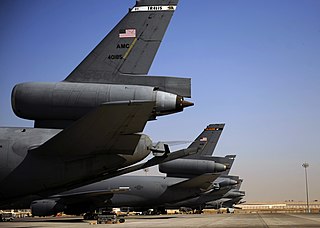
The 908th Expeditionary Air Refueling Squadron is a provisional United States Air Force (USAF) unit. It is assigned to the 378th Air Expeditionary Wing at Prince Sultan Air Base in Saudi Arabia. It has supported combat operations in Afghanistan, Iraq, and Syria from its previous location of Al Dhafra Air Base in the United Arab Emirates. The squadron has a varied background, having been formed by a series of consolidations of no fewer than five distinct units.

The 333d Special Operations Wing is an inactive United States Air Force unit. It was active from July 1968 through March 1970 at Pleiku Air Base, South Vietnam. In 1985, the wing was consolidated with the 333d Bombardment Group as the 333d Special Operations Wing.

The 96th Test Wing is a United States Air Force unit assigned to the Air Force Test Center of Air Force Materiel Command at Eglin Air Force Base, Florida. The wing was activated at Eglin in 1994 as the 96th Air Base Wing, the headquarters for all support units on Eglin, the largest installation in the Air Force. In 2012, it absorbed the mission and resources of the 46th Test Wing and added the mission of testing and evaluating weapons, navigation and guidance systems and command and control systems.






